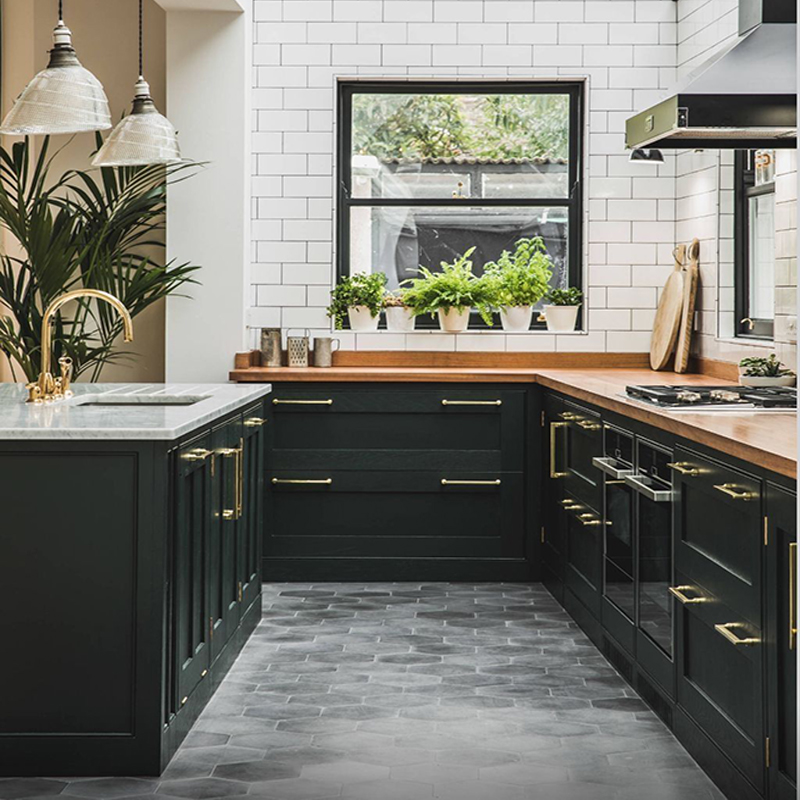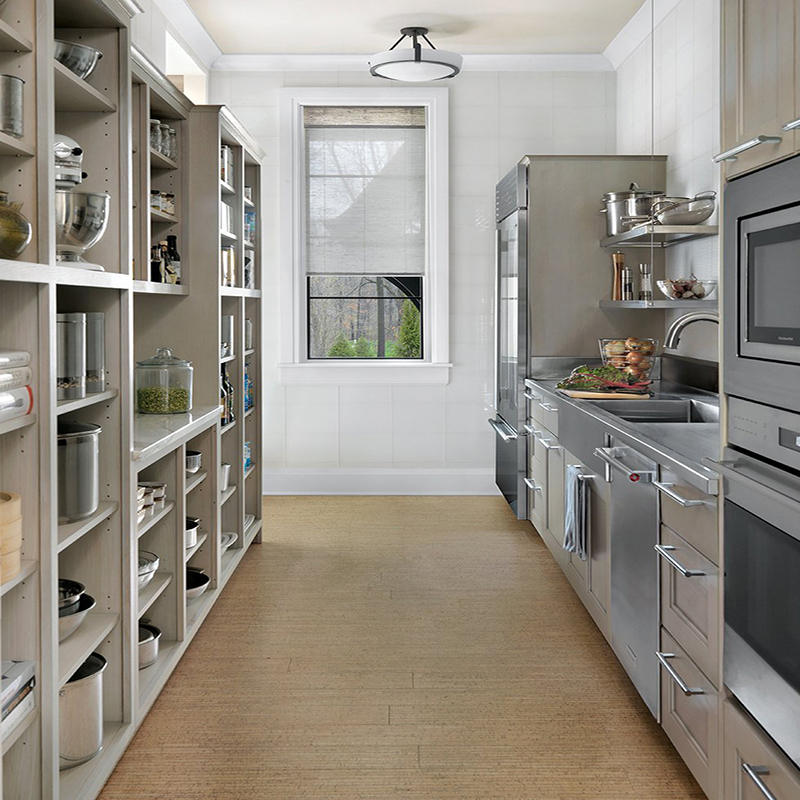
Indoor entertaining season is upon us, and having a large, open kitchen where you can spread out and get your prep work and cooking done certainly makes it easier to host a crowd. But what if you had a way to hide all that mess from your guests?
A “messy kitchen” or a “dirty kitchen,” is essentially a behind-the-scenes space where only you (and whoever else helps you prepare) see the dirty work involved in prepping for a large group. It’s where your pots and pans and cutting boards and utensils go as you’re cooking. This way, your main kitchen—often a hub of the home—stays spotless and pretty.
The messy kitchen doesn’t only need to be used for occasions though—it can also be where you prep your kids’ school lunches or assemble your morning smoothie. In the 20th century, these were often referred to as butler’s pantries, which in the 2000s evolved to be large pantries where fine china and other items not in use every day could be stored and stashed. Nowadays, these rooms are called “messy kitchens,” and we’re embracing the name—and the idea behind them.
In terms of practicality, Sharon Sherman of Thyme & Place Design in Wyckoff likens a messy kitchen to a mudroom, which “serves to keep the house clean and free from whatever you bring inside.” And like a mudroom, a back kitchen isn’t an afterthought, but is rather an intentional space built into the home. It may have a sink, a dishwasher and/or a wine fridge, as well as ample storage and counter space.
The open floor plans that are popular today give way to the messy kitchen concept, says Sherman. “If you have extra help in the kitchen, [these spaces] can provide additional worktop space for prepping ingredients, additional storage for small appliances and with an additional sink, clean-up is placed out of the main kitchen area.”

Sherman also loves the idea of using a large walk-in pantry as your messy kitchen, a spot where you not only store extra food and baking items but also small appliances such as a food processor, a microwave and a coffee maker.
If you don’t have too much space to spare, you can also use an extra closet as your back kitchen, as long as it’s tidy and well-organized. “A single-wall messy kitchen can be as small as 4 feet, which would allow a preparation counter with storage above and below,” Sherman notes. “Just because you do not have a large space does not mean you cannot have a well-designed pantry or messy kitchen.”

Not sure where to start? Our expert notes that location is key; ideally your messy kitchen should be adjacent to your main kitchen. Ventilation is important if you’ll be cooking in there, as is lighting (both overhead and undercounter), so you can see what you’re doing. You also want to figure out the back kitchen’s main purpose, which can help you in your overall design.
Do you prefer more cabinet space? More walking room? Is having a window important to you, or would you rather use that space for cabinets? An experienced kitchen designer can help you envision your dream “messy kitchen” and bring the concept to life.
What do you think of the “messy kitchen” trend? Tell us on Instagram @njhomemag, and check out the brand-new fall issue of NJ HOME magazine, out now, for more trends and home news.